Dog Dental Issues - More Common Than You Would Think
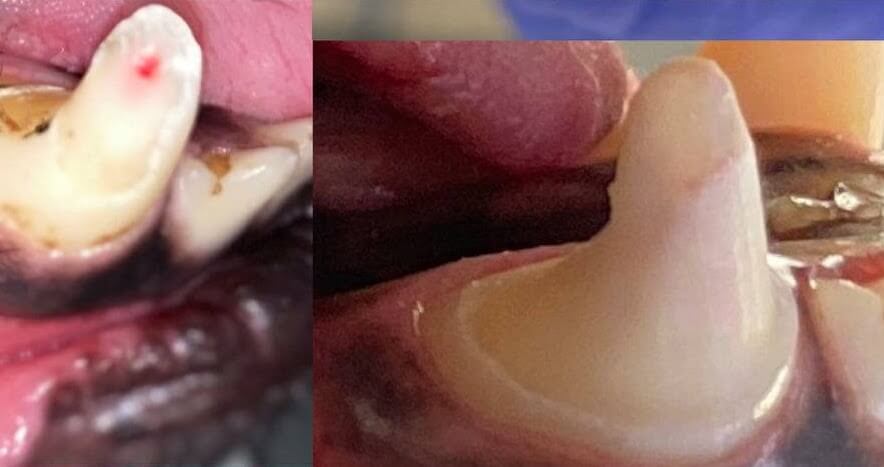 Research shows that eighty-seven percent of dogs by age three have jaw bone loss due to periodontal disease. While one would think dogs would stop eating, they rarely do. Most dogs that stop eating are for reasons other than dental disease, though dental pain is still present. Some call this pain, functional pain. An example of functional pain is a person with a toothache that still goes to work while awaiting their appointment to see their dentist. They are getting around and functioning and may be grumpy but are tolerating their pain. Just because a dog may tolerate their pain doesn’t mean it should go untreated. We also need to remember that teeth are like icebergs: they may look fine on top, but until intraoral x-rays are taken, we cannot see the hidden disease below.
Research shows that eighty-seven percent of dogs by age three have jaw bone loss due to periodontal disease. While one would think dogs would stop eating, they rarely do. Most dogs that stop eating are for reasons other than dental disease, though dental pain is still present. Some call this pain, functional pain. An example of functional pain is a person with a toothache that still goes to work while awaiting their appointment to see their dentist. They are getting around and functioning and may be grumpy but are tolerating their pain. Just because a dog may tolerate their pain doesn’t mean it should go untreated. We also need to remember that teeth are like icebergs: they may look fine on top, but until intraoral x-rays are taken, we cannot see the hidden disease below.
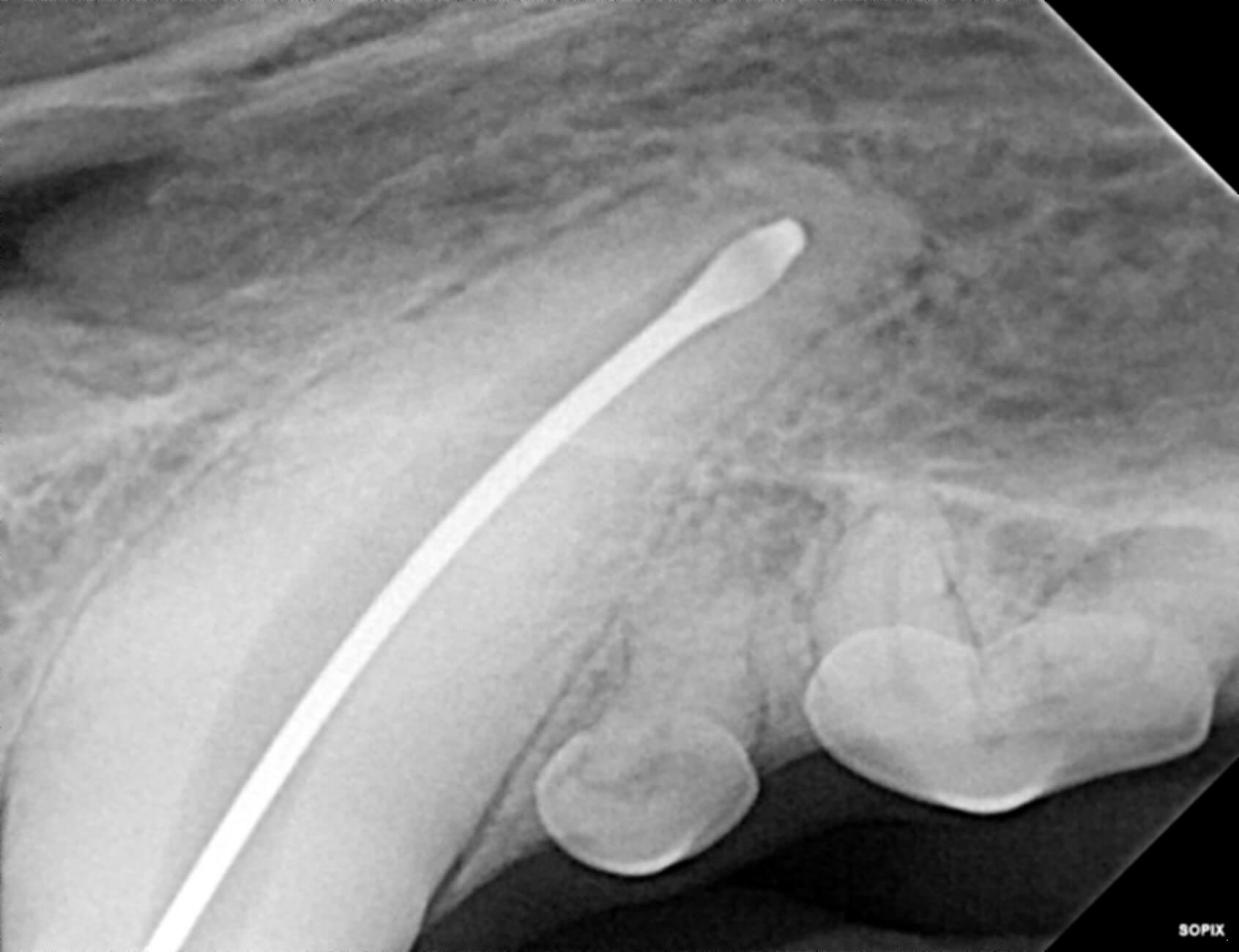 While the most common dental disease is periodontal disease (disease-causing pockets and jaw bone loss surrounding the tooth), another common problem is broken teeth. Broken teeth for a dog are or will become painful. The FDA has even put out a warning about the leading cause of broken teeth in dogs, feeding bones. Bones are not appropriate chewing toys for your dog, and the only toy that your dog should be chewing on should be soft enough for you to put a dent in with your fingernail. Click here to learn What To Look For In a Chew Toy.
While the most common dental disease is periodontal disease (disease-causing pockets and jaw bone loss surrounding the tooth), another common problem is broken teeth. Broken teeth for a dog are or will become painful. The FDA has even put out a warning about the leading cause of broken teeth in dogs, feeding bones. Bones are not appropriate chewing toys for your dog, and the only toy that your dog should be chewing on should be soft enough for you to put a dent in with your fingernail. Click here to learn What To Look For In a Chew Toy.
Why is Dog Dental Health Important?
Good dental health isn’t just important for humans to maintain. Maintaining good oral health not only helps your dog’s overall health, but it can also help extend their life. It has been estimated that at least 70% of dogs three years and older have dental issues. Though these problems have been proven to be painful, our dogs hide this pain and these symptoms. Most owners are surprised to see how much more playful their dog behaves once the unseen mouth pain is addressed. Our dogs are susceptible to the same dental ailments we are. These dental conditions are more likely to be treated in a dog:
- Periodontal disease needing extractions
- Broken tooth
- Full metal crown to return tooth strength
- Discolored tooth
- Recent tooth fracture
- Persistent baby teeth
- Painful bite
- Oral tumors
- Jaw fracture
- Dentigerous cyst
- Bone loss requiring guided tissue regeneration
- Oral nasal fistula
- Enamel defect
- Gingival hyperplasia
- Cavities
- TMJ problems
- Cleft lip/palate
- Tooth resorption
Root Canal Therapy for Dogs: What is it?
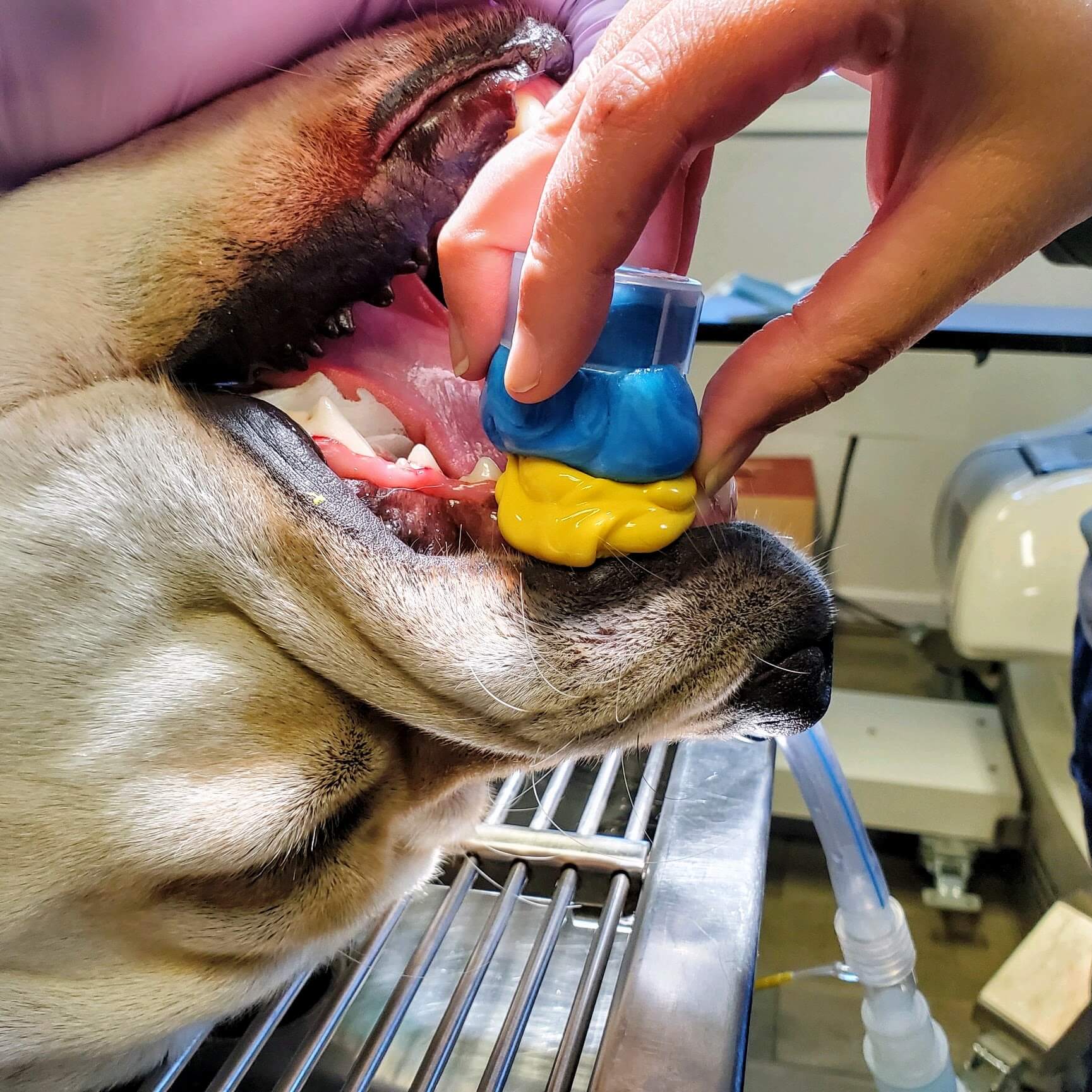 Root Canal therapy takes out the pain and disease from the inside of the diseased or broken tooth, leaving a dead but functional tooth in its place. This is done by removing the blood vessel and nerve supply inside the tooth by accessing the pulp chamber. To access the pulp chamber, we have to place a hole in the tooth which may create a weak spot for working dogs. We then clean and shape the tooth with many long and small files, and fill the now empty pulp chamber with Gutta Percha in 'stick' or point form. This is the traditional form of 'fill' to the now cleaned and 'chemically sterilized' tooth canal, but there are also other types of filling material other than Gutta Percha (GP). Lastly, tooth-colored composite restoration is placed in the hole(s) of the tooth to seal everything.
Root Canal therapy takes out the pain and disease from the inside of the diseased or broken tooth, leaving a dead but functional tooth in its place. This is done by removing the blood vessel and nerve supply inside the tooth by accessing the pulp chamber. To access the pulp chamber, we have to place a hole in the tooth which may create a weak spot for working dogs. We then clean and shape the tooth with many long and small files, and fill the now empty pulp chamber with Gutta Percha in 'stick' or point form. This is the traditional form of 'fill' to the now cleaned and 'chemically sterilized' tooth canal, but there are also other types of filling material other than Gutta Percha (GP). Lastly, tooth-colored composite restoration is placed in the hole(s) of the tooth to seal everything.
This may sound like a lot, but it's much less invasive than a tooth extraction. Root canal therapy is better for your dog and preserves function!
Expanding on Root Canal Therapy for Dogs: Full Metal Crowns
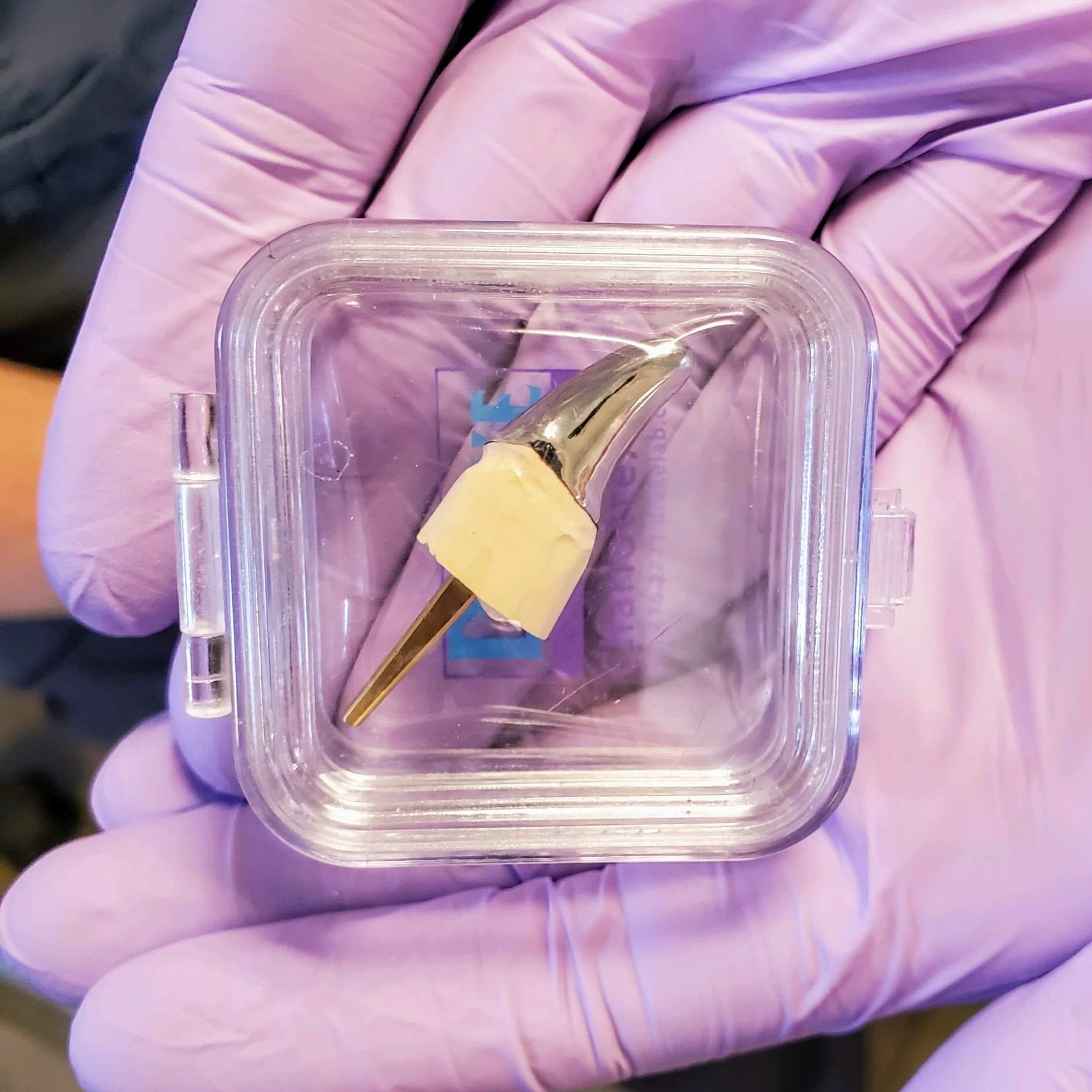 Especially for working dogs, when a canine tooth crown breaks, a full metal crown is wanted to return that tooth to near full strength. No crown should be applied until root canal therapy (RCT) is completed.
Especially for working dogs, when a canine tooth crown breaks, a full metal crown is wanted to return that tooth to near full strength. No crown should be applied until root canal therapy (RCT) is completed.
A crown preparation is performed after root canal therapy using diamond burs to remove 0.7mm of tooth margin creating a shelf for the future crown to sit up on. An impression is done, (the putty picture), then sent to the lab where they make the crown. A crown covers the entire tooth restoring the tooth to full strength, and it is cemented in place.
Cementing of the crown is done about 2 weeks after the tooth preparation. As many dogs may find hard things to chew on that caused the tooth break in the first place, this can be somewhat of a safety net should the dog chew on a hard object again. That said, chewing can break other teeth, so should still be avoided. The leading causes of tooth breakage in our patients are bones, antlers, nylabones, and hooves. Only chew toys with flex or that you can indent with your fingernail should be given as chew treats.
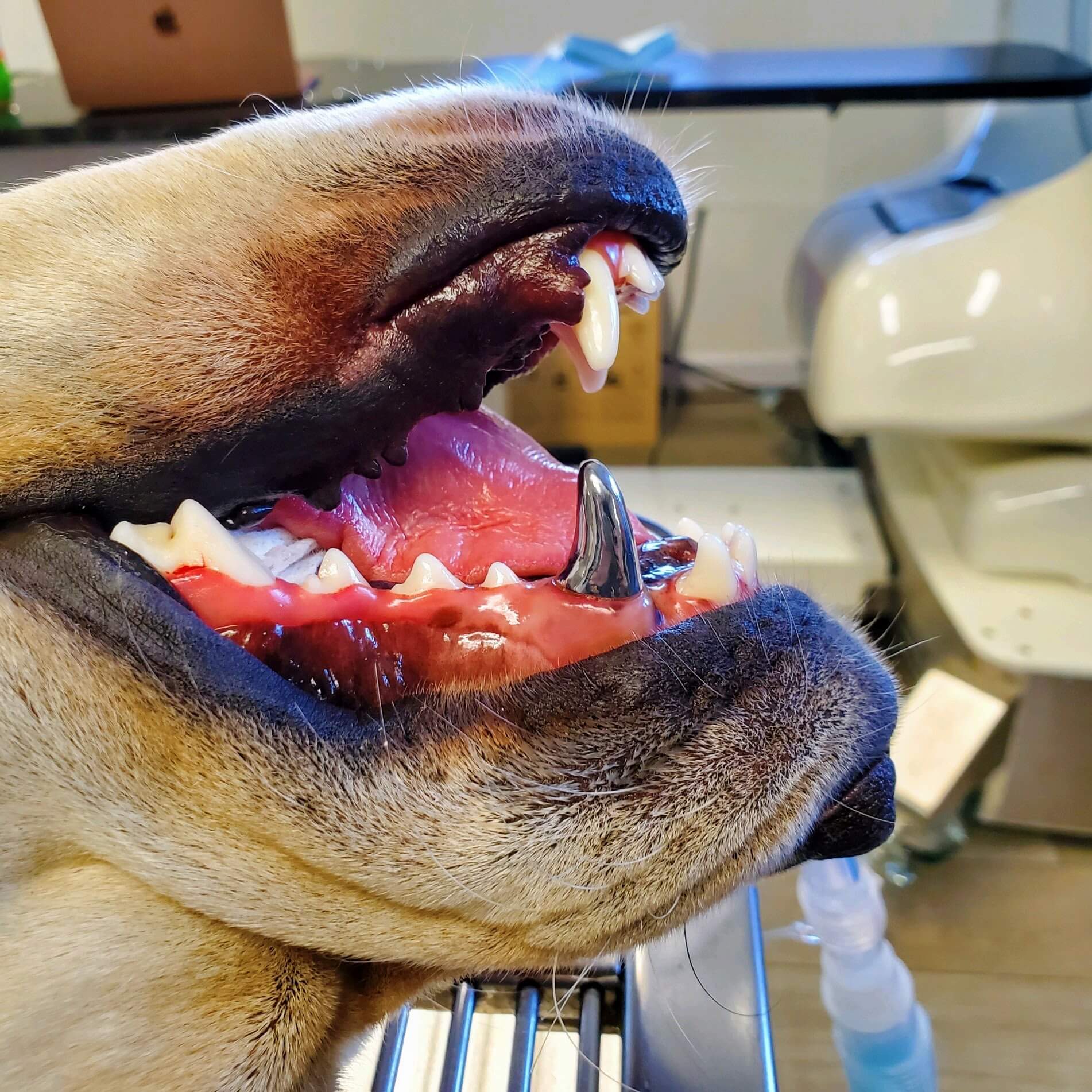 Below are a couple of pictures displaying the impression phase and then what the Full Metal Crown looks like on the Patient! Click here to read more about Crowns on our services page.
Below are a couple of pictures displaying the impression phase and then what the Full Metal Crown looks like on the Patient! Click here to read more about Crowns on our services page.
